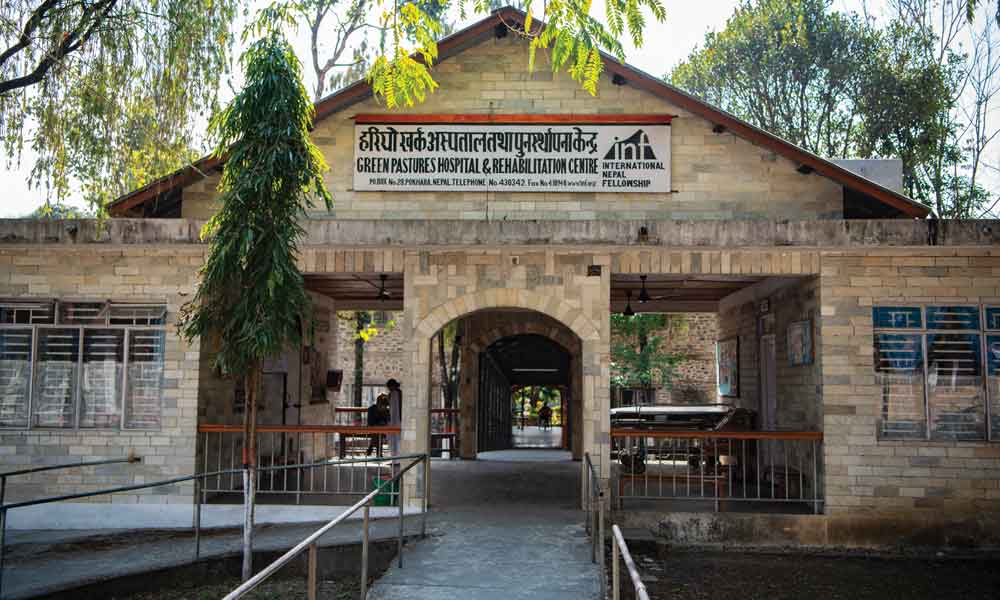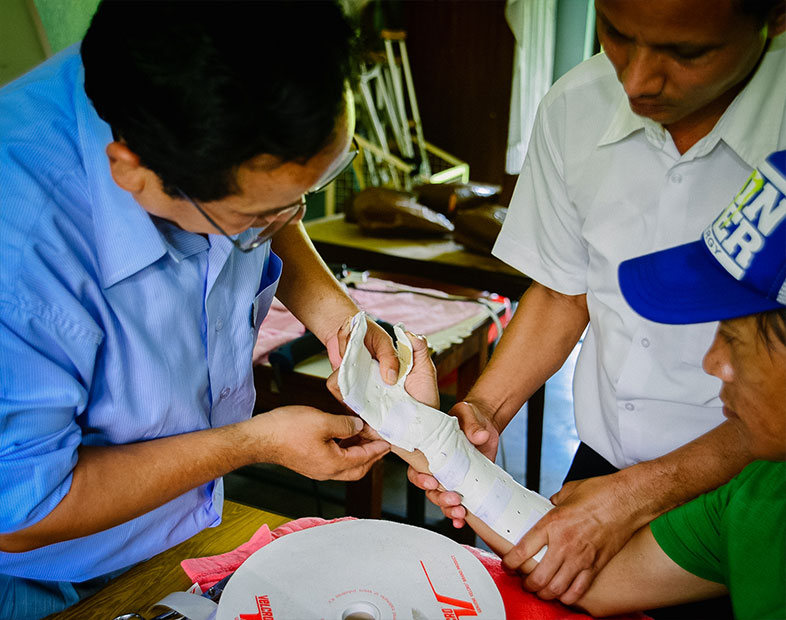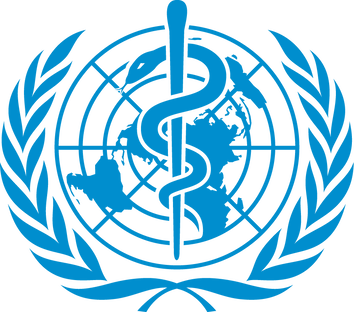PRESS RELEASE
When is elimination not elimination?
When it is leprosy
When it is leprosy
St Francis Leprosy Guild, London, UK, 1 December 2021: the elimination of a disease is usually considered a good thing. When fewer than one person in 10,000 has leprosy, the disease is declared eliminated, or no longer a public health problem.
According to its Leprosy Control Program, Nepal has sustained the elimination of leprosy as a public health problem at the national level since 2010. This major success story conceals a frightening truth. In some of Nepal’s seven Provinces, leprosy has not been eliminated at all. For example, more than one in 10,000 people were registered with leprosy in Gandaki Province, Pokhara, where SFLG’s partner, Green Pastures Hospital is located.
According to its Leprosy Control Program, Nepal has sustained the elimination of leprosy as a public health problem at the national level since 2010. This major success story conceals a frightening truth. In some of Nepal’s seven Provinces, leprosy has not been eliminated at all. For example, more than one in 10,000 people were registered with leprosy in Gandaki Province, Pokhara, where SFLG’s partner, Green Pastures Hospital is located.
When the elimination of leprosy was declared in 2010, government health services were scaled back with terrible results for people with the disease. The provision of healthcare for leprosy or leprosy-related disabilities such as ulcers was reduced and the knowledge and ability to diagnose leprosy declined.
When elimination was declared in 2010, our NGO partners and donors withdrew their interest and their funding. Today our hospital is packed full of people needing treatment for leprosy” said Dr Ramesh Sharma, Dermatology Consultant, at Green Pastures Hospital.
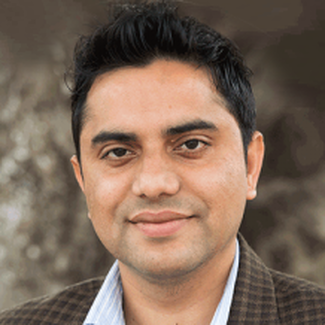
According to Dr. Sharma, even experienced healthcare professionals struggle to diagnose leprosy in its early stages, when the disease can be readily confused with scabies, psoriasis, or other skin disorders.
Even dermatologists can misdiagnose leprosy and the younger doctors have never been exposed to leprosy, said Dr. Sharman. “Who is going to suspect a disease that has been declared eliminated?”
If leprosy is allowed to develop unchecked and untreated, it can be spread, unknowingly into communities and cause life-changing disabilities. It is estimated that four million people are undetected or affected by leprosy worldwide.
My greatest fear is that people with leprosy who are undiagnosed and untreated will pass on the disease to others in their community or go on to develop terrible disabilities” said SFLG’s Chief Executive Officer, Clare McIntosh.
Historically, when the term ‘leprosy elimination’ has been used at a national, regional or global level, it hides the fact that leprosy still exists, undiagnosed, at a local level, in hidden, endemic pockets” she explained.
“I urge any government to think long and hard before declaring that any disease no longer exists at a general or statistical level, whether it’s COVID-19 or leprosy, said Clare. “Our experience with leprosy shows that it can hide, undiagnosed without symptoms for years before slowly re-emerging with disastrous consequences.”
She concluded “we must think very carefully by what we mean by ‘elimination’ in relation to leprosy.”

SFLG’s TRACE operating strategy is putting an emphasis on Active case-finding (ACF); early detection of leprosy followed by treatment with Multidrug therapy, reflecting new global approaches in the ongoing fight against leprosy.
About Green Pastures Hospital and Rehabilitation Centre, Pokhara, Nepal
Although leprosy was declared eliminated in Nepal in 2010, several thousand new cases of leprosy are diagnosed there every year. Since the country now lacks trained health workers to recognise the early signs of leprosy, many cases go undiagnosed and untreated. The delay in diagnosis, as well as continued social stigma, means many people do not receive the treatment or the support that they need. SFLG has worked with the International Nepal Fellowship at Green Pastures since 1997.
About Green Pastures Hospital and Rehabilitation Centre, Pokhara, Nepal
Although leprosy was declared eliminated in Nepal in 2010, several thousand new cases of leprosy are diagnosed there every year. Since the country now lacks trained health workers to recognise the early signs of leprosy, many cases go undiagnosed and untreated. The delay in diagnosis, as well as continued social stigma, means many people do not receive the treatment or the support that they need. SFLG has worked with the International Nepal Fellowship at Green Pastures since 1997.
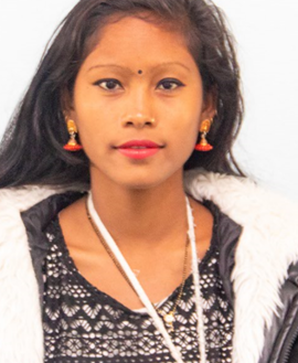
Dil Kumari, aged 23, received specialised hand surgery at Green Pastures Hospital to correct disability caused by leprosy.
For more stories like Dil's, please click on the link.
Green Pastures Hospital, run by the NGO, International Nepal Fellowship (INF) is helping to support this need. It opened in 1957, in Pokhara, Gandaki Pradesh, and now serves around 11,000 patients a year. INF Works closely with the Nepal Government, local communities, and local, national, and internal agencies.
Download Green Pastures fact sheet.
About Nepal and leprosy
Nepal, bordered by China and India, is home to the highest mountain in the world, Mount Everest. It has a population of around 29.5 million people, and it is one of the world’s poorest nations. Development challenges include its landlocked position, unemployment, lack of access to safe sources of water and poor infrastructure. In addition, the devastating earthquakes in 2015 and political infighting have significantly delayed the development of the country. Nepal is a WHO Global Priority country for leprosy.
For more information about leprosy please visit this webpage
Nepal, bordered by China and India, is home to the highest mountain in the world, Mount Everest. It has a population of around 29.5 million people, and it is one of the world’s poorest nations. Development challenges include its landlocked position, unemployment, lack of access to safe sources of water and poor infrastructure. In addition, the devastating earthquakes in 2015 and political infighting have significantly delayed the development of the country. Nepal is a WHO Global Priority country for leprosy.
For more information about leprosy please visit this webpage
For more information please contact:
Clare McIntosh
Chief Executive Officer
St Francis Leprosy Guild
London W10 6EJ
Tel: +44 (0)7754 592240
Email: [email protected]
Twitter @StLeprosy
Facebook
Clare McIntosh
Chief Executive Officer
St Francis Leprosy Guild
London W10 6EJ
Tel: +44 (0)7754 592240
Email: [email protected]
Twitter @StLeprosy
About leprosy
1. What is leprosy?
Leprosy (also known as Hansen’s disease) is a complex, chronic neglected tropical disease caused by the Mycobacterium leprae bacterium. It affects the skin, the upper respiratory tract and peripheral nerves in the hands and feet, and the eyes. Leprosy can affect anyone, at any age, but it is linked to poverty, malnutrition, and genetic susceptibility.
Leprosy remains a health problem in low and middle-income countries worldwide.
2. How is leprosy transmitted?
It is thought that leprosy is transmitted via droplets from the nose combined with prolonged, close contact with infected individuals.
3. How is leprosy diagnosed?
Leprosy is difficult to diagnose at its early stages, but it often presents as numb patches on the skin. Currently, the most reliable method to diagnose leprosy, is a slit-skin-smear test in the laboratory.
Leprosy may incubate for up to twenty years before presenting with any signs. If leprosy remains undiagnosed, the person affected may unwillingly transmit the disease throughout a community. However, within a short period of receiving multidrug therapy, a person affected by leprosy will no longer be infectious. If leprosy is diagnosed in its early stages, it can be treated readily, and it will not cause disabilities. Preventing disabilities from developing means people with leprosy are less likely to suffer from the stigma and discrimination that can destroy their livelihoods and entire lives.
4. How infectious is leprosy?
95% of most populations have a natural immunity to leprosy. The remaining 5% become vulnerable, mainly through poor nutrition, poor living conditions, lack of hygiene and a weakened immune system. Leprosy is not hereditary.
5. Why are people with leprosy often so disfigured?
People with leprosy lose all feeling in the affected areas and as a result, there is diminished awareness of harm from trauma or heat. Without treatment, the lack of sensation can lead to permanent damage to skin, nerves, limbs, and eyes. It can also lead to the development of reoccurring, lifelong, hard-to-treat ulcers.
6. Is there a cure? How is leprosy treated?
Leprosy can be cured using multidrug therapy (MDT), available at no cost to patients from the World Health Organization. If MDT is taken in the early stages of the disease, permanent damage to nerves is completely avoided.
7. How many are affected by leprosy in the world today?
In recent years, WHO statistics reveal that around 200,000 people are newly diagnosed with leprosy. The COVID-19 pandemic has had a significant impact on health services and leprosy programmes have been affected with a wide disruption to services in many countries. Of great concern is that people with leprosy may receive a late diagnosis and develop lifechanging, visible disabilities as a result. The 2022 WHO WER may reveal the hidden truth.
These statistics do not account for those people who have leprosy with no symptoms or, who are not diagnosed and are unwittingly transmitting it to their communities. In addition, the statistics do not include those individuals who have been treated for leprosy, but whose disabilities, caused by leprosy need ongoing healthcare needs, or those who are subject to leprosy stigma and discrimination.
8. Which countries have leprosy, where is leprosy endemic?
*The WHO has identified 23 global priority countries for leprosy, where over 95% of the global total of people detected with leprosy are found. The 23 countries are: Angola, Bangladesh, Brazil, Comoros, Cote Ivoire, DR Congo, Egypt, Ethiopia, India, Indonesia, Kiribati, Madagascar, Micronesia, Mozambique, Myanmar, Nepal, Nigeria, Philippines, South Sudan, Sri Lanka, Sudan, Somalia, and Tanzania.
*WHO Weekly epidemiological record, Global Leprosy Update 10 September 2021, 36, 2021, 96, 421-444 http://www.who.int/wer
1. What is leprosy?
Leprosy (also known as Hansen’s disease) is a complex, chronic neglected tropical disease caused by the Mycobacterium leprae bacterium. It affects the skin, the upper respiratory tract and peripheral nerves in the hands and feet, and the eyes. Leprosy can affect anyone, at any age, but it is linked to poverty, malnutrition, and genetic susceptibility.
Leprosy remains a health problem in low and middle-income countries worldwide.
2. How is leprosy transmitted?
It is thought that leprosy is transmitted via droplets from the nose combined with prolonged, close contact with infected individuals.
3. How is leprosy diagnosed?
Leprosy is difficult to diagnose at its early stages, but it often presents as numb patches on the skin. Currently, the most reliable method to diagnose leprosy, is a slit-skin-smear test in the laboratory.
Leprosy may incubate for up to twenty years before presenting with any signs. If leprosy remains undiagnosed, the person affected may unwillingly transmit the disease throughout a community. However, within a short period of receiving multidrug therapy, a person affected by leprosy will no longer be infectious. If leprosy is diagnosed in its early stages, it can be treated readily, and it will not cause disabilities. Preventing disabilities from developing means people with leprosy are less likely to suffer from the stigma and discrimination that can destroy their livelihoods and entire lives.
4. How infectious is leprosy?
95% of most populations have a natural immunity to leprosy. The remaining 5% become vulnerable, mainly through poor nutrition, poor living conditions, lack of hygiene and a weakened immune system. Leprosy is not hereditary.
5. Why are people with leprosy often so disfigured?
People with leprosy lose all feeling in the affected areas and as a result, there is diminished awareness of harm from trauma or heat. Without treatment, the lack of sensation can lead to permanent damage to skin, nerves, limbs, and eyes. It can also lead to the development of reoccurring, lifelong, hard-to-treat ulcers.
6. Is there a cure? How is leprosy treated?
Leprosy can be cured using multidrug therapy (MDT), available at no cost to patients from the World Health Organization. If MDT is taken in the early stages of the disease, permanent damage to nerves is completely avoided.
7. How many are affected by leprosy in the world today?
In recent years, WHO statistics reveal that around 200,000 people are newly diagnosed with leprosy. The COVID-19 pandemic has had a significant impact on health services and leprosy programmes have been affected with a wide disruption to services in many countries. Of great concern is that people with leprosy may receive a late diagnosis and develop lifechanging, visible disabilities as a result. The 2022 WHO WER may reveal the hidden truth.
These statistics do not account for those people who have leprosy with no symptoms or, who are not diagnosed and are unwittingly transmitting it to their communities. In addition, the statistics do not include those individuals who have been treated for leprosy, but whose disabilities, caused by leprosy need ongoing healthcare needs, or those who are subject to leprosy stigma and discrimination.
8. Which countries have leprosy, where is leprosy endemic?
*The WHO has identified 23 global priority countries for leprosy, where over 95% of the global total of people detected with leprosy are found. The 23 countries are: Angola, Bangladesh, Brazil, Comoros, Cote Ivoire, DR Congo, Egypt, Ethiopia, India, Indonesia, Kiribati, Madagascar, Micronesia, Mozambique, Myanmar, Nepal, Nigeria, Philippines, South Sudan, Sri Lanka, Sudan, Somalia, and Tanzania.
*WHO Weekly epidemiological record, Global Leprosy Update 10 September 2021, 36, 2021, 96, 421-444 http://www.who.int/wer


